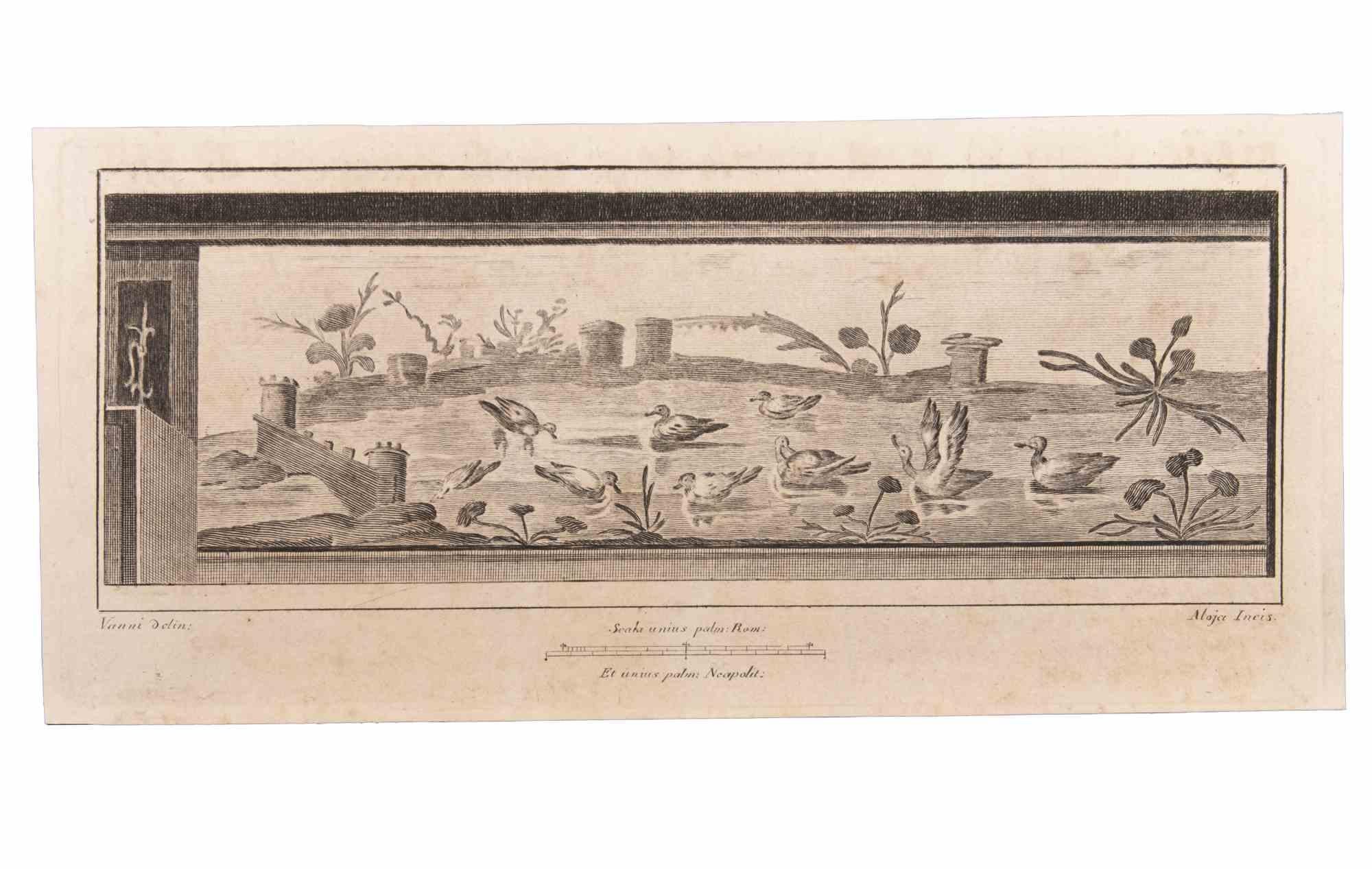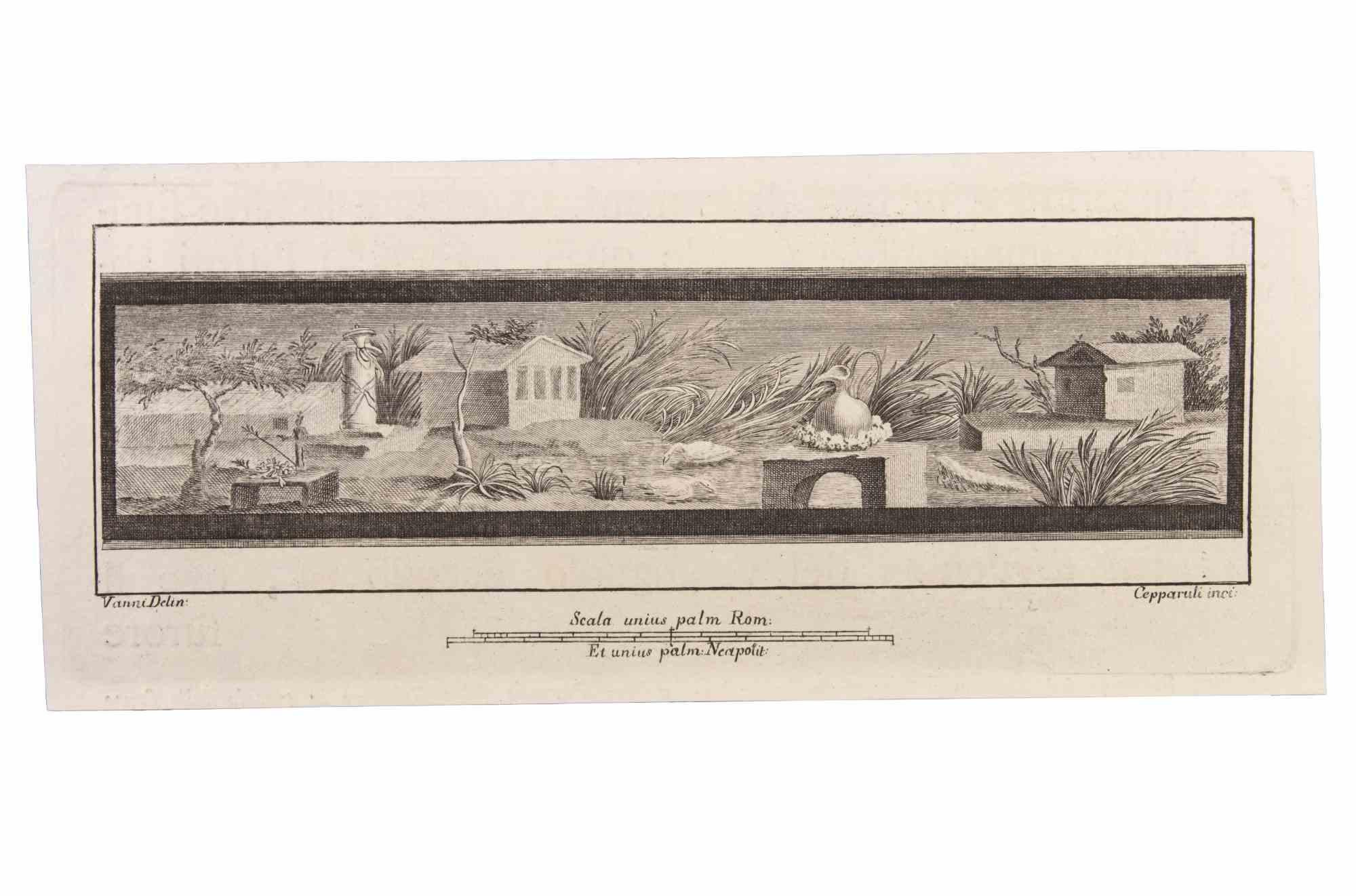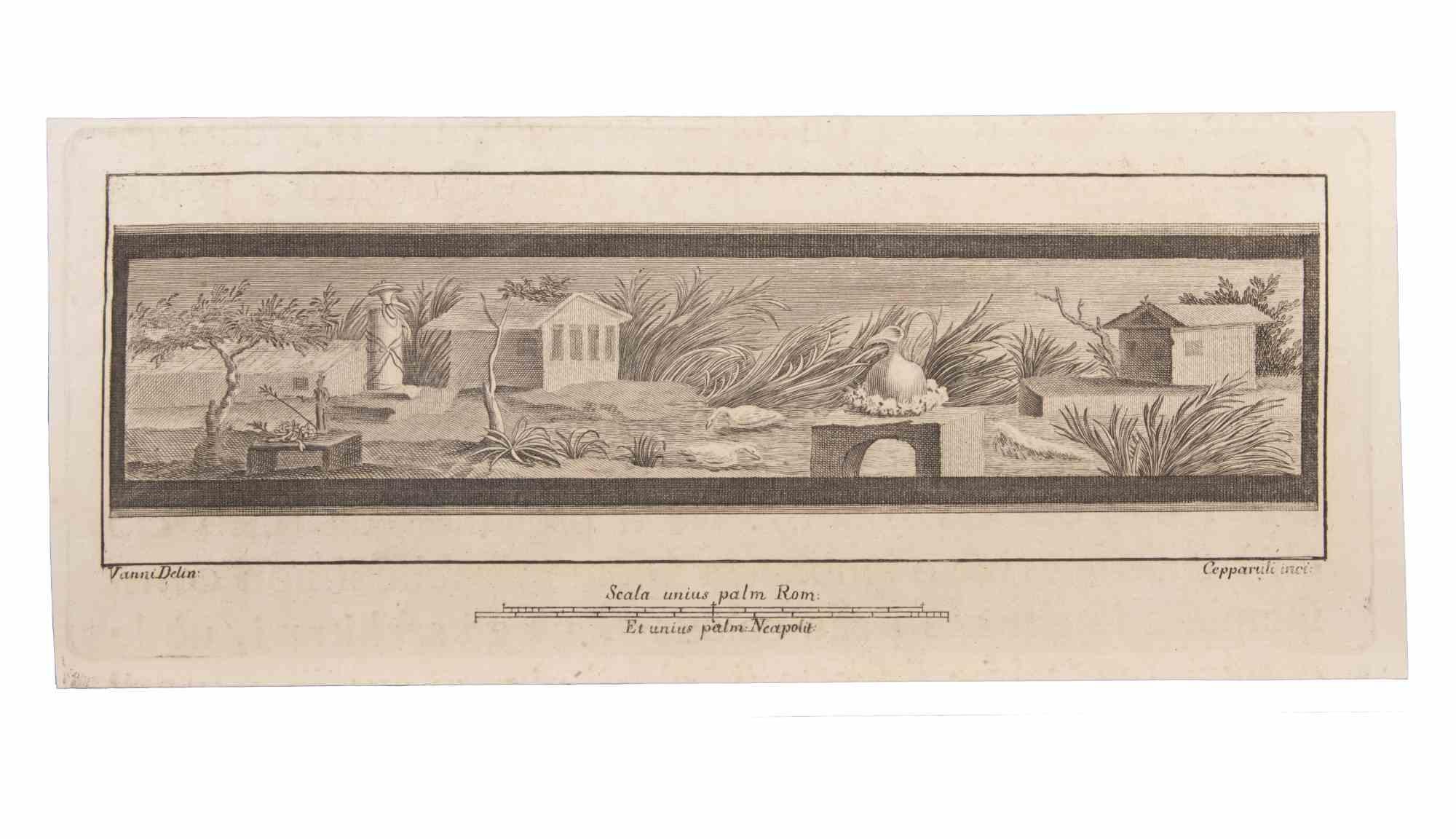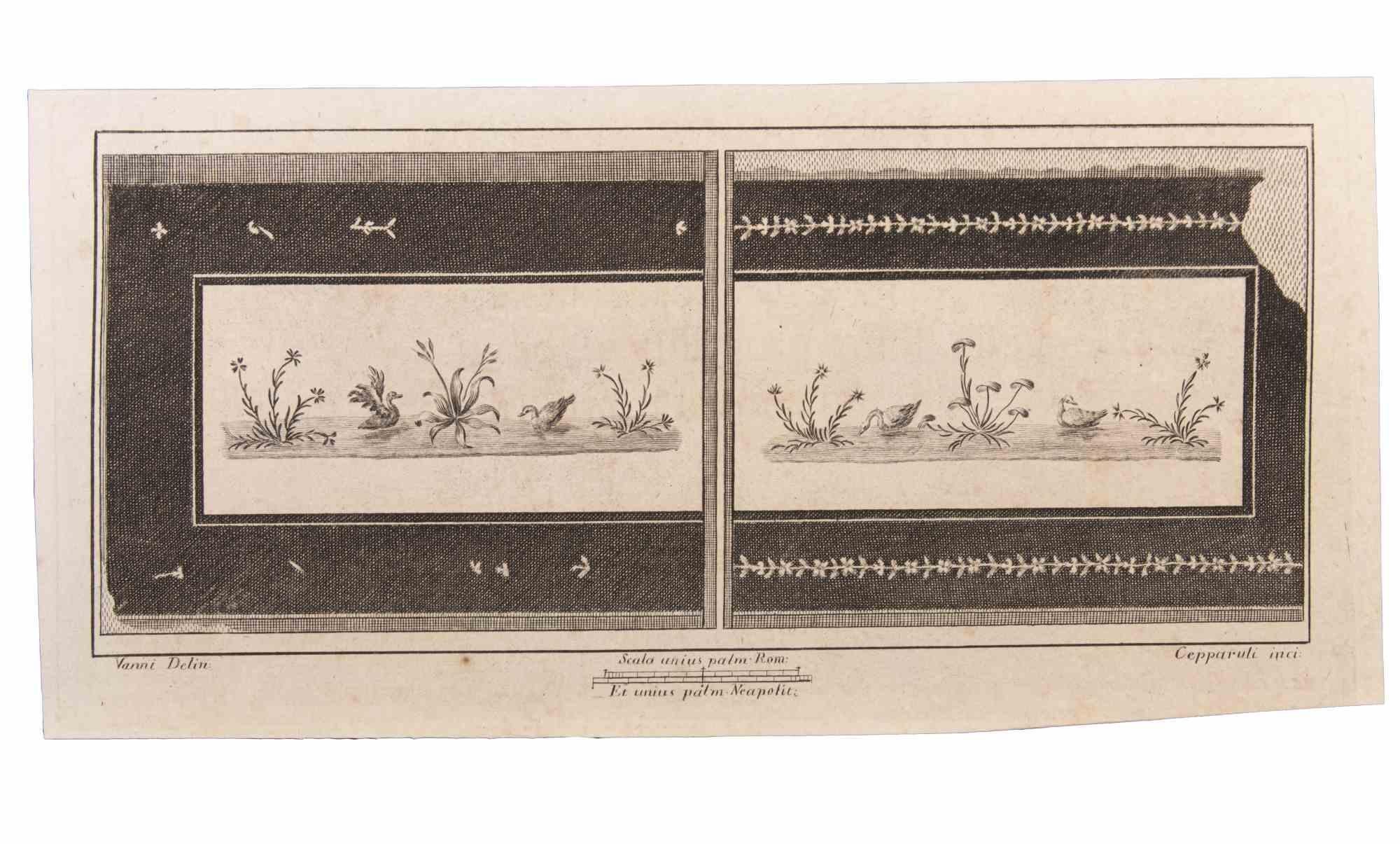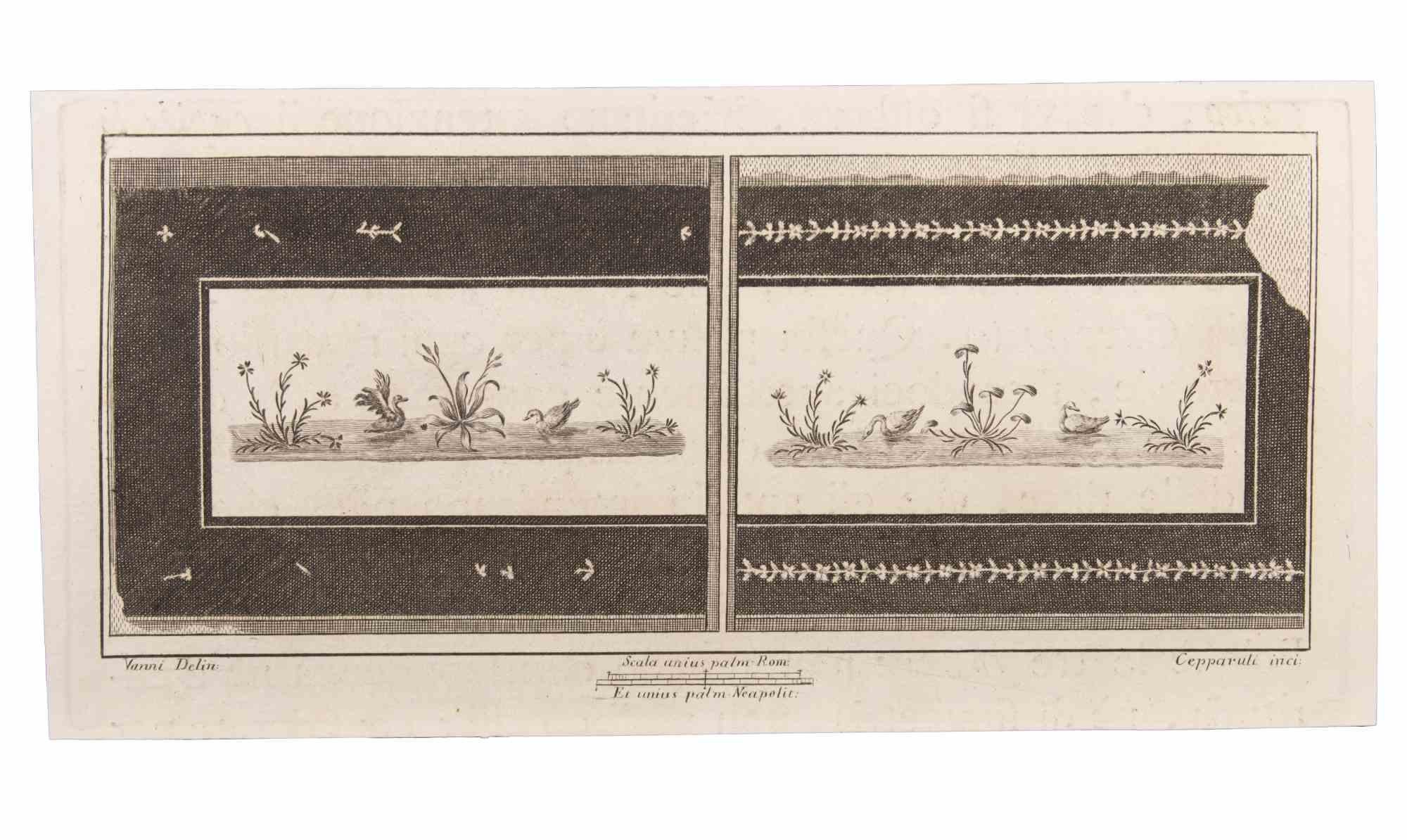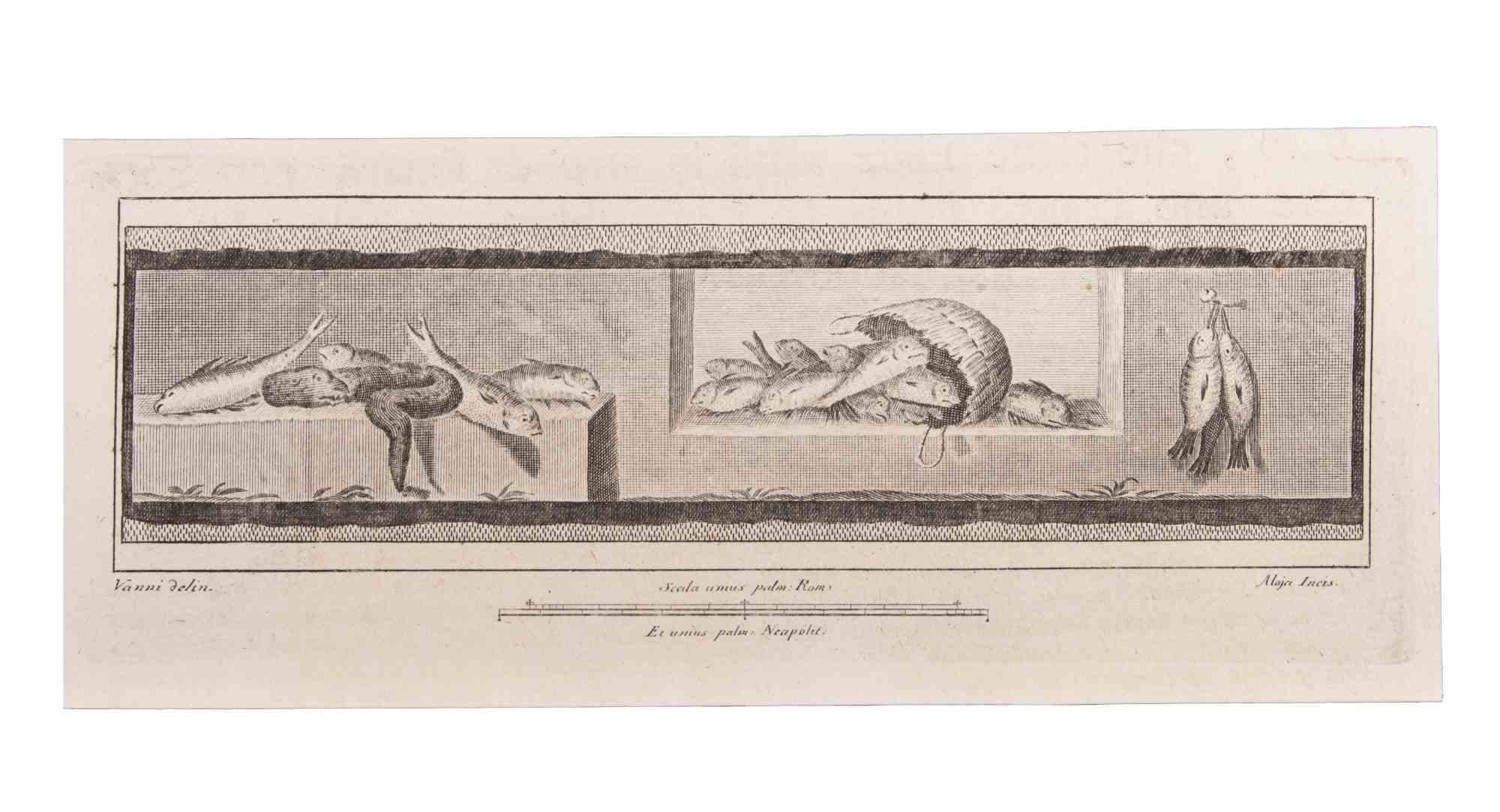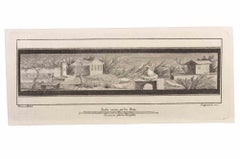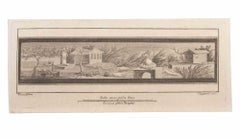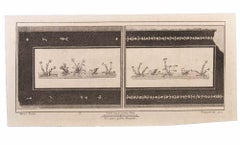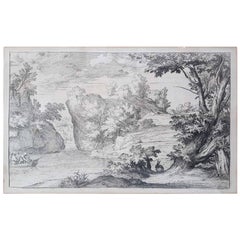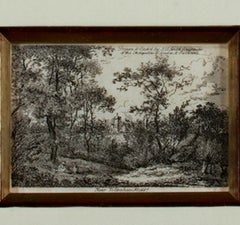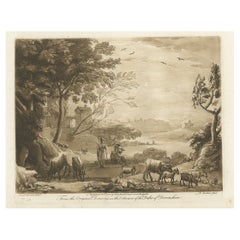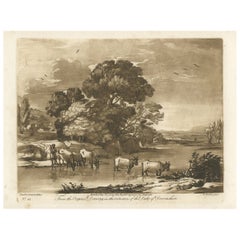Items Similar to Landscape With Animals - Etching by Luigi Aloja - 18th Century
Want more images or videos?
Request additional images or videos from the seller
1 of 2
Luigi AlojaLandscape With Animals - Etching by Luigi Aloja - 18th CenturyLate 18th Century
Late 18th Century
$287.33
£213.20
€240
CA$401.31
A$435.22
CHF 228.60
MX$5,286.57
NOK 2,860.53
SEK 2,693.34
DKK 1,827.60
About the Item
Landscape With Animals is an Etching realized by Luigi Aloja (1783-1837).
The etching belongs to the print suite “Antiquities of Herculaneum Exposed” (original title: “Le Antichità di Ercolano Esposte”), an eight-volume volume of engravings of the finds from the excavation of the ruins of Herculaneum in the Kingdom of Naples (now Campania, Italy).
It was published between 1757 and 1792 by the Regia Stamperia, and copies were delivered to selected recipients across Europe.
Despite the title, the Antiquity of Herculaneum shows objects from all the excavations undertaken by the Bourbons in the Gulf of Naples. These include Pompeii, Stabia and two sites of Herculaneum: Resina and Portici.
The Bourbon King Carlo appointed fifteen scholars creating a new “Herculaneum Academy” to study the artifacts and publish the results of the archaeological excavations of the sites.
The engravings are of high quality and the accompanying text shows a large scholarship.
They were realized by 25 prominent artists involved by the King to prepare drawings and engravings on the finds, among which we can find Giovanni Elia Morghen, Carlo Nolli, Luigi Vanvitelli and Giovanni Battista Casanova.
The “Antiquities” was designed more to amaze readers with the quality of the objects in the collection of the King of Naples than to be used in research., following and increasing the interest of 18th century society for the classical culture and Art in particular.
Through the exaltation of the classical concept of proportions and harmony, the book was of inspiration to the neoclassical movement in Europe, giving artists and decorators access to a huge shop of Hellenistic motifs.
Ref.:
National Gallery (Washington), Mark J. Millard Architectural, IV (2000), no. 1;
L. Garcia y Garcia, Nova bibliotheca pompeiana (2 v., 1998);
Royal Institute of British Architects, British Architectural Library ... Early printed books, 1 (1994), no. 112.
U. Pannuti, 'Incisori e disegnatori della Stamperia Reale di Napoli nel secolo XVIII: la pubblicazione delle Antichità di Ercolano', in Xenia antiqua, 9 (2000), p. 151-178;
V. Trombetta, 'L'edizione de Le Antichità di Ercolano esposte' in Rendiconti dell'Accademia di Archeologia, lettere e belle arti di Napoli , 59 (1984), p.151-172.
- Creator:Luigi Aloja
- Creation Year:Late 18th Century
- Dimensions:Height: 4.34 in (11 cm)Width: 9.26 in (23.5 cm)Depth: 0.04 in (1 mm)
- Medium:
- Movement & Style:
- Period:
- Framing:Framing Options Available
- Condition:Insurance may be requested by customers as additional service, contact us for more information.
- Gallery Location:Roma, IT
- Reference Number:Seller: T-1371211stDibs: LU650311643902
About the Seller
4.9
Platinum Seller
Premium sellers with a 4.7+ rating and 24-hour response times
1stDibs seller since 2017
7,734 sales on 1stDibs
Typical response time: 2 hours
- ShippingRetrieving quote...Shipping from: Grasse, France
- Return Policy
Authenticity Guarantee
In the unlikely event there’s an issue with an item’s authenticity, contact us within 1 year for a full refund. DetailsMoney-Back Guarantee
If your item is not as described, is damaged in transit, or does not arrive, contact us within 7 days for a full refund. Details24-Hour Cancellation
You have a 24-hour grace period in which to reconsider your purchase, with no questions asked.Vetted Professional Sellers
Our world-class sellers must adhere to strict standards for service and quality, maintaining the integrity of our listings.Price-Match Guarantee
If you find that a seller listed the same item for a lower price elsewhere, we’ll match it.Trusted Global Delivery
Our best-in-class carrier network provides specialized shipping options worldwide, including custom delivery.More From This Seller
View AllLandscape With Animals - Etching by Luigi Aloja - 18th Century
Located in Roma, IT
Landscape With Animals is an Etching realized by Luigi Aloja (1783-1837).
The etching belongs to the print suite “Antiquities of Herculaneum ...
Category
Late 18th Century Old Masters Figurative Prints
Materials
Etching
Landscape With Animals - Etching by F. Cepparuli - 18th Century
By Francesco Cepparuli
Located in Roma, IT
Landscape With Animals is an Etching realized by Francesco Cepparuli (1750-1767).
The etching belongs to the print suite “Antiquities of Herc...
Category
Late 18th Century Old Masters Figurative Prints
Materials
Etching
Landscape With Animals - Etching by F. Cepparuli - 18th Century
By Francesco Cepparuli
Located in Roma, IT
Landscape With Animals is an Etching realized by Francesco Cepparuli (1750-1767).
The etching belongs to the print suite “Antiquities of Hercu...
Category
Late 18th Century Old Masters Figurative Prints
Materials
Etching
Landscape With Animals - Etching by F. Cepparuli - 18th Century
By Francesco Cepparuli
Located in Roma, IT
Landscape With Animals is an Etching realized by Francesco Cepparuli (1750-1767).
The etching belongs to the print suite “Antiquities of Her...
Category
Late 18th Century Old Masters Figurative Prints
Materials
Etching
Decoration With Animals - Etching by F. Cepparuli - 18th Century
By Francesco Cepparuli
Located in Roma, IT
Decoration With Animals is an Etching realized by Francesco Cepparuli (1750-1767).
The etching belongs to the print suite “Antiquities of Herculaneum Exposed” (original title: “Le ...
Category
Late 18th Century Old Masters Figurative Prints
Materials
Etching
Decoration With Animals - Etching by Luigi Aloja - 18th Century
Located in Roma, IT
Decoration With Animals is an Etching realized by Luigi Aloja (1783-1837).
The etching belongs to the print suite “Antiquities of Herculaneum Exposed” (original title: “Le Antichit...
Category
Late 18th Century Old Masters Figurative Prints
Materials
Etching
You May Also Like
17th Century Flaemish Abraham Genoels II "Landscape with Rabbit" Etching
By Abraham Genoels II
Located in Cagliari, IT
Beautiful etching by Abraham Genoels II (Antwerp 1640-1723) from a painting by Adam Frans van der Meulen (Brussels 1844-Paris 1690).
Excellent state of conservation with wide margin...
Category
Antique Late 17th Century Belgian Prints
Materials
Copper
$938 Sale Price
20% Off
18th century landscape etching pastoral nature scene detailed ink trees
By John Thomas Smith
Located in Milwaukee, WI
"Near Tottenham Midd." is an original etching by John Thomas Smith at the top right of the image, reading "Drawn & Etch'd by J. T. Smith, Engraver of the Antiquities of London & Envi...
Category
1790s Old Masters Landscape Prints
Materials
Paper, Ink, Etching
Rare Antique Print of a Landscape with Cattle, 1774
Located in Langweer, NL
Antique print of a landscape with cattle. Mezzotint with etched lines, printed in sepia. Engraved by Richard Earlom (1743 - 1822) after a sketch in the copy of Claude le Lorrain's 'L...
Category
Antique 18th Century Prints
Materials
Paper
$306 Sale Price
20% Off
Rare Original Antique Engraving of a Landscape with Cattle in England, 1775
Located in Langweer, NL
Antique print of a landscape with cattle. Mezzotint with etched lines, printed in sepia. Engraved by Richard Earlom (1743 - 1822) after a sketch in the copy of Claude le Lorrain's 'L...
Category
Antique 18th Century Prints
Materials
Paper
$344 Sale Price
20% Off
17th Century Gabriel Perelle "Landscape" Etching, France, circa 1660
By Gabriel Perelle
Located in Cagliari, IT
A French landscape by Gabriel Perelle. With a modern walnut frame
Gabriel Perelle (Vernon, 1604 - Paris, 1677) was a French engraver, draftsman and printer of topographic views and landscapes.
A pupil of Simon Vouet, Perelle specialized in landscapes with a classical setting, not unlike those of Francisque Millet, although with clearly decorative pretensions. He founded an etching lab, with the collaboration of his sons Nicolas and Adam.
Perelle was also a pupil of Daniel Rabel and produced hundreds of engravings from his drawings, as well as compositions by fellow antagonists such as Israël Silvestre, Paul Bril, Jacques Callot, Michel Corneille the Elder, Jan Asselijn...
Category
Antique 1660s French Baroque Prints
Materials
Paper
$555 Sale Price
20% Off
French 18th century bucolic scene, soft ground etching, style of Boucher, c1770,
Located in Melbourne, Victoria
Fine soft ground etching printed in a orange / red ink on laid paper. A French etching in the manner of Boucher. A shepherd and shepherdess rest by water among sheep, goats a donkey ...
Category
Late 18th Century Romantic Landscape Prints
Materials
Etching
More Ways To Browse
Jane Seymour
Japanese Skull
Jiang Tie Feng
Joseph Zaritsky
Kaws Signed
Keith Haring Album Covers
Keith Haring Record Covers
Lon Megargee
Marc Chagall 1966
Marc Chagall Signed Lithographs Angel
Matisse Screen Print
Michel Delacroix Signed
Mourlot Exhibition Poster
Naked Women Art
Norman Rockwell Freedom From Want
Nursery Prints
Pablo Picasso Dance
Pastel Picasso
